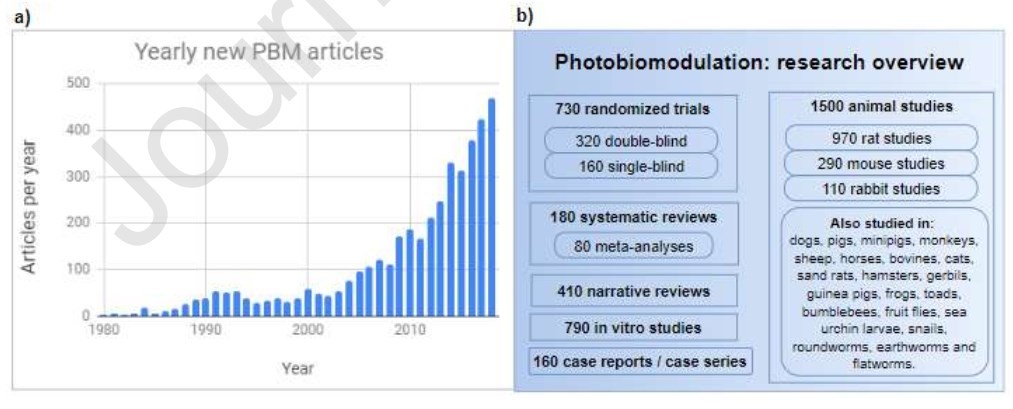Low Level Laser therapy and photobiomodulation proven to help health for many years
Sunlight and Health: Shifting the Focus From Vitamin D3 to Photobiomodulation by Red and Near-Infrared Light
Review Ageing Res Rev. 2020 May 25;101089. doi: 10.1016/j.arr.2020.101089
Vladimir Heiskanen 1 [email protected], Morgan Pfiffner 2, Timo Partonen 3
📄 Download the PDF from Sci-Hub via Vitamin D Life
Both sun exposure and serum vitamin D levels have been associated with lower risks of all-cause mortality and chronic age-related diseases, e.g., cancer, diabetes and cardiovascular disease, in epidemiological studies. These associations have mainly been ascribed to beneficial effects of vitamin D. However, a vast body of randomized controlled trials (RCTs) and Mendelian randomization studies have failed to confirm any major health benefits from vitamin D supplementation. In this review, we present tentative evidence showing that red and near-infrared light, both being present in sunlight, could explain the associations between sunlight exposure and better health status. Body irradiation with red and near-infrared light, usually termed as photobiomodulation (PBM), has demonstrated beneficial effects in animal models of chronic diseases. Beyond this, preliminary evidence from RCTs suggest potential clinical benefit from PBM for chronic diseases. PBM is currently being investigated in many pre-registered clinical trials, results of which will eventually clarify the role of red and near-infrared light in the prevention and treatment of common age-related chronic diseases.
Clipped from the PDF
The exact mechanisms for these effects are not well known, though preliminary evidence suggests
possible roles for mitochondrial cytochrome c oxidase and photolabile sources of nitric oxide
(Serrage et al., 2019). The existence of mitochondria-related mechanism is supported by studies
reporting photobiomodulation-induced changes in ATP levels, mitochondrial membrane potential
(ΔΨm), cytochrome c oxidase activity, oxygen consumption and activity of SIRT1/PGC1α pathway,
as well as protection of mitochondria against toxins such as potassium cyanide and tetrodotoxin
(Hamblin, 2018; Wong-Riley et al., 2005; Zhang et al., 2020).
Currently, the scientific literature concerning PBM encompasses more than 4,500 scientific articles,
including more than 1500 animal trials and 700 randomized clinical trials. The publication rate of PBM
research has increased rapidly during the 21st century, and the current publication rate is
approximately 500 new articles annually (Figure 1)
The overview is based on a personal database of approximately 4700 scientific articles related to PBM,
compiled by manual literature search (http://www.bitly.com/PBM-database; Accessed on 3 March 2020

